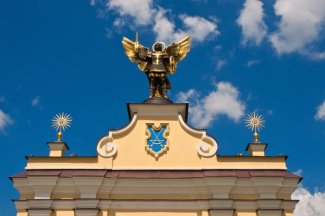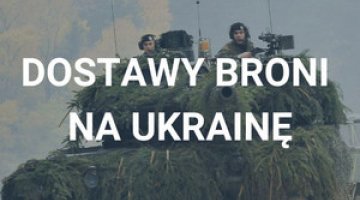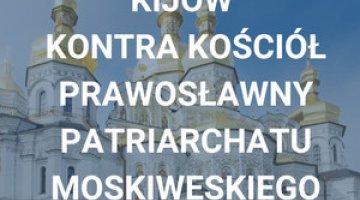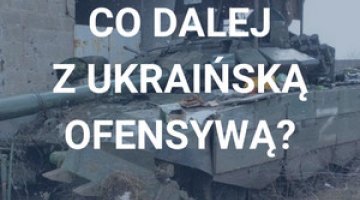The fight for canonical independence for Ukrainian Orthodoxy

The Ukrainian Orthodox Church-Kyiv Patriarchate (UOC-KP) and the Ukrainian Autocephalous Orthodox Church (UAOC) have submitted a request to the Ecumenical Patriarch (i.e. the patriarch of Constantinople, the supreme head of all Orthodox Churches) to grant autocephaly to Ukrainian Orthodoxy. On 19 April the Ukrainian parliament, at the request of President Petro Poroshenko, expressed its support for this measure. The President himself expressed his support on 22 April. There are numerous indications that a positive decision regarding this issue has already been made, and a relevant thomos (patriarch’s decree) will be announced any time this year Proclamation of the Ukrainian Autocephalous Particular Orthodox Church (Ukrayinska Pomisna Avtokefalna Pravoslavna Tserkva, UAPOC) will likely trigger a new wave of confessional conflicts across Ukraine, including a likely schism in the Ukrainian Orthodox Church, which recognizes the primacy of the patriarch of Moscow (UOC). It is beyond any doubt that a certain portion of believers and clergy, which today is difficult to estimate, will remain loyal to Moscow and that the Moscow Patriarchate will make every effort to support Ukrainian structures of the Russian Orthodox Church (ROC). The government of Ukraine, for its part, will try to prevent the development of these structures.
From the political point of view, both the expected granting of autocephaly to Ukrainian Orthodoxy and the likely conflicts resulting from this are favourable to President Poroshenko because they increase both his and his party’s chances of re-election in the elections planned for 2019. On the one hand, he will gain new trust from patriotically minded voters, on the other hand, opponents of autocephaly will coalesce around pro-Russian parties. This in turn may help promote a pro-Russian politician to compete with Poroshenko in the second round of presidential voting as a weak counter-candidate whom the current president would defeat relatively easily.
Ukrainian Orthodoxy: a historical perspective
Kyivan Rus, the predecessor of Ukraine, Belarus and the north-western part of Russia, adopted Christianity 1030 years ago. The Kyivan Metropolitanate created back then quickly gained autocephaly (canonical independence), though between 1299 and 1458 the Metropolitans of Kyiv and All-Russia resided in Vladimir on the Klyazma River, and later in Moscow. In 1458, the Moscow Metropolitanate unilaterally broke away from the Kyiv Metropolitanate, and in 1589 the Moscow Metropolitans were conferred the rank of patriarchs. A century later, against the will of the Ecumenical Patriarch, the Moscow patriarchs subordinated the Kyiv Metropolitanate to themselves and forced the Ecumenical Patriarch’s approval ex post (the approval was annulled in 1924), and it has remained this way until now. However, it is beyond question that, from a canonical point of view, it is the Constantinople Church, rather than the Moscow Church, which is Kyiv’s Mother Church. At present, this is also the opinion of the Ecumenical Patriarch[1].
During the Ukrainian war for independence (1917-1921), in an act of 1 January 1919 the Directorate of the Ukrainian People’s Republic (UNR) proclaimed the creation of the Ukrainian Autocephalous Synodal Orthodox Church, which was confirmed by the Orthodox council in May 1920. After a short period of development, this Church was destroyed by the Communist regime and survived in exile only.
After the fall of the Soviet Union, the autocephalous Church in exile returned to Ukraine. In the same period, there was a schism in the structures of the Russian Orthodox Church in Ukraine. It was the community centred around this Church that formulated the demand cited in the title of this paper, which became a slogan of the Ukrainian patriotic-confessional movement. However, no agreement was reached between the supporters of the ‘imported’ Church and the followers of the ‘schism’ Church. As a consequence, not two but three Orthodox structures were formed in Ukraine: UOC, UOC-KP and UAOC, of which only the first one (the one that recognizes the primacy of the Moscow patriarch) was considered legitimate by the Orthodox world. The schism was accompanied by numerous conflicts over who may use specific churches, frequently involving acts of violence, sometimes with the participation of nationalist militants.
During the presidencies of Leonid Kuchma and Viktor Yanukovych, the UOC enjoyed support from the state. President Viktor Yushchenko, for his part, supported the UOC-KP and attempted to have this Church recognized by the Ecumenical Patriarchate, to no avail. Initially, the UOC had been the dominant structure, but social support for the Kyiv Patriarchate continued to rise gradually[2]. According to the most recent data, the UOC has 52 dioceses and 12,000 parishes, and the UOC-KP – 35 dioceses and 5,000 parishes (the UAOC with its 14 dioceses and a thousand parishes remains of secondary importance)[3]. The estimates regarding the number of believers are divergent and not generally credible. However, the recently published results of a survey of Ukrainian people’s religious awareness[4] indicate that in recent years researchers recorded a stable increase in the number of believers who identify with the Kyiv Patriarchate and a drop in the number of those who support the UOC. Similarly, a drop in the number of people who consider themselves ‘simply believers in Orthodoxy’ has also been recorded (these respondents are partly indifferent to confessional disputes and partly choose not to disclose their preferences). According to these data (announced in the spring of 2018), 42.6% of the respondents who considered themselves Orthodox Christians declared that they belonged to the UOC-KP, 0.4% to UAOC, 19.1% to UOC, and 34.8% said they were ‘simply believers in Orthodoxy’. At the same time, ‘nationalisation’ of Ukrainian Orthodoxy was supported by 50% of all respondents (regardless of their declared faith): 27% of them supported the view that Ukrainian Orthodox Christians should unite under the primacy of the Kyiv Patriarchate, 23% were in favour of the creation of a new united Church. A mere 9% of the respondents said that Ukrainian Orthodoxy should remain subordinated to the Moscow Patriarchate.
The canonical aspect
The very fact that the Ecumenical Patriarch received the request from two structures that until recently were denied the status of Churches by the Orthodox world indicates a major shift in Phanar’s approach towards this issue (Phanar is the seat of the Patriarch, just like the Vatican is the seat of the Pope). The announcement that the Patriarch will consider this request acting “as its [the Ukrainian Orthodoxy’s – author’s note] genuine Mother Church” is also of great importance[5]. In fact, this indicates a positive decision, which was most likely agreed at the meeting of Patriarch Bartholomew I with President Poroshenko during Easter (8-9 April 2018).
It can also be seen as confirmation of a major drop in Moscow’s influence on the decisions taken by the Constantinople patriarch. Several years ago, Moscow was unable to prevent the patriarchal synod from rejecting the category of “canonical territory”, according to which the whole territory of the former Soviet Union (excluding Georgia)[6] should remain in the jurisdiction of the Moscow Patriarchate, regardless of the current political situation. This would also be against the tradition of harmonising the boundaries of specific Churches with state borders, which is typical of Orthodoxy.
In 2016, Moscow practically frustrated the general council of the Orthodox Church , the first in a thousand years, which was intended as Patriarch Bartholomew I’s life’s work. The reasons behind this included the council’s intention to adopt the rules of granting autocephaly. The absence of a Russian delegation at the council (and also of the delegations from Bulgaria, Georgia and the Antiochian Patriarchate with its seat in Damascus) has deprived the council of its intended universal reach and resulted in the issue of autocephaly being removed from the agenda. For this short-term success Moscow is now likely to pay the price in the form of a strategic failure: Phanar has become more open to Kyiv’s suggestions.
At present, Moscow (both the Moscow Patriarchate and perhaps also the Russian government) and its supporters are forming a coalition to object to the recognition of Ukraine’s autocephaly. There have been reports suggesting that on 4 May 2018 Vadym Novinsky (Ukrainian oligarch and activist of the lay Orthodox community, supporter of the primacy of the Moscow Patriarchate) discussed this issue with the head of the Polish Autocephalous Orthodox Church; it has been further reported that representatives of the Russian Orthodox Episcopate visited Warsaw to take part in these talks[7]. Other sources are suggesting that the Ecumenical patriarch and his milieu, as well as other autocephalous Orthodox Churches, are under strong pressure.
If it is formed, the new Church will be an autocephalous metropolitanate subordinated to Constantinople or a patriarchate. Kyiv is known to insist on the latter option, all the more so because the UOC-KP is already headed by a patriarch, even if self-proclaimed. According to information from the Patriarch Filaret, the thomos is likely to be announced in July[8], which means that a festive proclamation of autocephaly in Kyiv will be possible on 28 July, i.e. on the 1030th anniversary of the Baptism of Rus. If the decision is announced around this time, it will mean that external pressure has been successful at least in part.
The political aspect
For Ukraine’s political elites the issue of autocephaly is of triple importance: strategic, tactical and religious (in a private sense). The first aspect is obvious: today the UOC serves as a channel to spread Russia’s political and cultural influence, a major portion of its clergy and its lay community is even challenging the independent identity of Ukrainian culture, language and nation. Therefore, limiting the UOC’s influence is an important element of building a national identity, based on turning away from Moscow in every possible respect. A widespread belief remains that an ‘independent’ (national) Church is an important attribute of political and civilisational sovereignty.
Today, the tactical aspect is more important. In 2019, Ukraine will hold two elections: the presidential election in spring and parliamentary election in autumn. Meanwhile, polls indicate that President Poroshenko’s approval rating has dangerously dropped to single-digit figures, and in simulations of the second round of voting he is defeated by all his prospective counter-candidates[9]. Similarly, his party has little chance of winning the parliamentary election; it may even lose its status as a coalition forming party. However, due to the fact that Poroshenko intends to seek re-election, what he needs is an event that would erase the impression held by patriotically-oriented and state-supporting voters that over the last five years Ukrainian government has been disappointing and oligarchic in nature.
The creation of a Kyiv Patriarchate that would be recognized by the Orthodox world (excluding Moscow and its satellites) as canonically legitimate, could represent one such success: Poroshenko could present himself as ‘the nation’s unifier’ and ‘its liberator from Russian bondage’. Moreover, most of his opposing candidates, Yulia Tymoshenko in particular, would be unable to challenge this rhetoric. This would help Poroshenko to catapult Yuri Boyko – the only candidate he would defeat – into the second round of voting.
The wave of conflicts that will likely accompany the unification of Orthodox structures (see below) will also trigger a consolidation of a portion of the Party of Regions’ former electorate around Yuri Boyko, an oligarch and leader of the Opposition Bloc (a party formed after the dissolution of the Party of Regions). He is the last major leader on this side of the political scene (the above-mentioned ‘Orthodox oligarch’, Vadym Novinsky, is one of his sponsors). Such polarisation would enable Poroshenko to portray the second round as a clash of patriotic and democratic forces with a national betrayal camp, and this might be enough to secure victory.
In this situation, Poroshenko is playing for very high stakes (if not the highest). A refusal from the Ecumenical Patriarch, or even a major postponement, concerning the decision to grant Ukrainian Orthodoxy autocephaly, will considerably reduce the current president’s prospects of re-election. This is why the opinions of many Kyiv-based observers, suggesting that when Poroshenko announced his decision he had already been informed that Bartholomew I’s decision would be positive and favourable to him, are likely correct.
Personal religious motivations are true for those politicians who treat their Orthodox religious view seriously. The current president is surely one of them. He is a pious man and an active member of the UOC, which he sees as the only source of valid sacraments. The fact that he does all this as the president of a country which is waging a hybrid war with Russia (which automatically includes religious issues as well) seems to be a source of discomfort for him and could have been one of his motives for taking up this issue.
A certain ambiguity in the Ukrainian state’s support for the Churches’ actions should not be disregarded. Firstly, this policy may be interpreted as an infringement of the division between the Church and the state (this reservation has been formulated by representatives of the UOC). Secondly, even today the Ukrainian state does not recognize the existence of Churches as such. The Ukrainian legal system approves of the existence of ‘religious organisations’ only, i.e. parishes, seminaries, monasteries, curias, but not deaneries and dioceses (this is a remnant of the Soviet approach to religious confessions). In practice, the state and the local governments maintain contacts with major confessional structures and recognise their de facto existence. However, de iure there are no Churches in Ukraine. Consequently, the government in Kyiv has requested Phanar to recognize structures that it itself does not recognize.
From the perspective of conflicts that will likely be triggered by the unification of Orthodoxy, this legal situation will be favourable to Kyiv: disputes between specific parish communities in individual towns and cities will be settled by common courts, and the state will officially wash its hands of the issue to avoid being accused by the West of violating ‘the principle of world-view neutrality’.
Prospects
Assuming that in his thomos Bartholomew I will announce the creation of the Ukrainian Autocephalous Particular Orthodox Church, this will merely mark the beginning of the unification process. Even the prospective unification of UOC-KP and UAOC will require a synod of the two Churches to be convened, for example, to harmonise the overlapping networks of dioceses and parishes. It is hard to imagine that this would proceed without any conflicts, such as over ambition-related issues. Another problem will be the election of a new Kyiv patriarch. It is almost certain that this honour will not be granted to the current patriarch, Filaret, due to both his advanced age (he was born in 1929) and the fact that he would be viewed as a rock of offence by the majority of clergymen and followers of the UOC inclined to support ‘national unification’. A likely outcome is that the UOC will experience an open schism. It is suggested that the ranks of its clergy, and all the more so for its lay followers, include a large number of supporters of a national Orthodox Church. (Their informal leader is Antonii, Metropolitan of Boryspil, once a close collaborator of Metropolitan Volodymyr, the former head of the UOC; the opponents of autocephaly are currently led by Onufry, the current Metropolitan of Kyiv and All-Ukraine, and Metropolitan Agafangel of Odesa, an open Russophile). The course of the unification process will show how numerous this group is. According to recent announcements, those who choose to remain loyal to Moscow will have to formally change their status to that of an Exarchate of the Russian Orthodox Church.
The merger of a portion of the UOC’s dioceses and parishes with the structures of the new Kyiv Patriarchate will create new problems and trigger conflicts which will likely involve acts of violence (this is unavoidable in a country that is so ‘saturated with arms’ and has so many war veterans). Many parishes will split, which means that they will fight for their right to specific churches. Numerous behind-the-scenes interventions by state authorities to support the unification process are to be expected. These processes will likely last at least one year, during which time two electoral campaigns will be held. This, in turn, means that disputes are unlikely to be settled in a concilliatory manner.
The expected creation of UAPOC will have consequences for the Greek Catholic community. It cannot be ruled out that a portion of the followers and perhaps also of the clergy of the Ukrainian Greek Catholic Church will renounce unity with the Holy See in the name of national unity. In the poll cited above as many as 35% of Greek Catholic respondents supported the creation of a common Orthodox Church. The concept of creating a “Ukrainian particular Church” understood as a unification of all Ukrainian structures of Eastern Christianity (and not only Orthodoxy) was very popular with Greek Catholics.
*
The consequences of the prospective unification of Ukrainian Orthodoxy for the Russian Orthodox Church are another issue. This will be a major blow for the ROC both in terms of prestige and in the organisational-financial aspect: as many as a third of its parishes are located in Ukraine. The ROC will not lose the entirety of its assets in Ukraine, but it will likely lose the status of the world’s largest Orthodox community and will be weakened and humiliated as a result of this process. One cannot exclude the possibility that this will result in a ‘soft schism’, involving a refusal to maintain contacts with the Kyiv Patriarchate and a freezing of relations with Phanar. History has recorded one similar precedent: in the 15th century the Moscow Metropolis rejected the decisions of the Council of Florence regarding the union between Rome and Constantinople, thereby positioning itself outside the universal Church.
The consequences of such a reaction from the Moscow Patriarchate are hard to imagine. One possible consequence could be that the Holy See would be in big trouble, since in its ecumenical dialogue it is more oriented toward Russian Orthodoxy than Greek or Balkan Orthodoxy. This type of reaction or even a harsher one is possible, especially if the government in Moscow considers it favourable in the context of the goals of Russia’s policy towards not only Ukraine but also the West and the Middle East[10].
[1] Communiqué of the Holy and Sacred Synod, 22 April 2018, http://www.ec-patr.org/docdisplay.php?lang=gr&id=2475&tla=gr
[2] For more on religious and confessional affairs in Ukraine see: T. A. Olszański, ‘A quarter-century of independent Ukraine. Dimensions of transformation,’ OSW Studies 28 April 2017, p. 77-83, https://www.osw.waw.pl/en/publikacje/osw-studies/2017-11-28/a-quarter-century-independent-ukraine-dimensions-transformation; idem, ‘The Western Borderlands. The place of Eastern Galicia and Volhynia in the Ukrainian state,’ OSW Studies, 4 July 2013, p. 65-76, https://www.osw.waw.pl/en/publikacje/osw-studies/2013-07-04/summary-western-borderlands-place-eastern-galicia-and-volhynia
[3] Релігія і Церква в українському суспільстві: соціологічне дослідження-2018; 25 April 2018, http://razumkov.org.ua/novyny-tsentru/informatsiini-materialy-osoblyvosti-relihiinoho-i-tserkovnorelihiinoho-samovyznachennia-ukrainskykh-hromadian-tendentsii-20102018rr. This publication also contains documents regarding the attempts at autocephaly, made available in late April 2018.
[4] Ibidem.
[5] Communiqué of the Holy and Sacred Synod, op. cit.
[6] The Armenian Apostolic Church is not a part of the Orthodox world, Orthodox Christians living in Armenia (0.5% of the population) are followers of the Russian Orthodox Church.
[7] Cf. I. Kapsamun, Шанси на автокефалію, 7 May 2018, https://day.kyiv.ua/uk/article/podrobyci/shansy-na-avtokefaliyu/
[8] Филарет: Думаю, что в июле мы получим Томос и автокефалию, 31 May 2018, https://censor.net.ua/video_news/3069005/filaret_dumayu_chto_v_iyule_my_poluchim_tomos_i_avtokefaliyu_video
[9] KMIS survey results announced in mid-April; https://www.pravda.com.ua/news/2018/05/7/7179666/ For more on the pre-election situation in Ukraine see T. Iwański, ‘Poroshenko stands alone. Ukraine politics in a pre-election year,’ OSW Commentary, 21 May 2018, https://www.osw.waw.pl/en/publikacje/osw-commentary/2018-05-21/poroshenko-stands-alone-ukraine-politics-a-pre-election-year
[10] It is no coincidence that in its fight against the Ecumenical Patriarch, Moscow resorted to the Antiochian Patriarchate which is dependent on the Assad regime.




